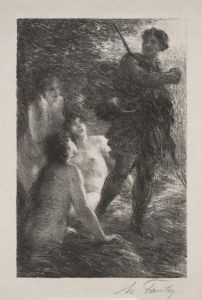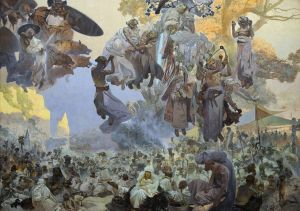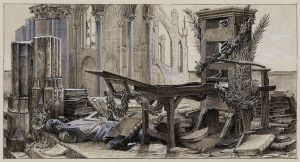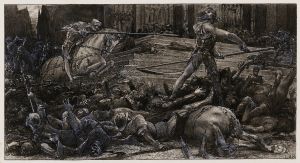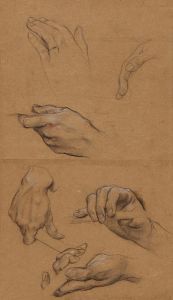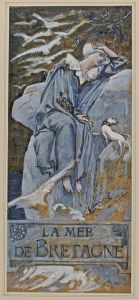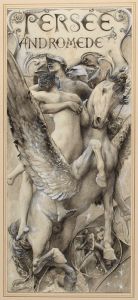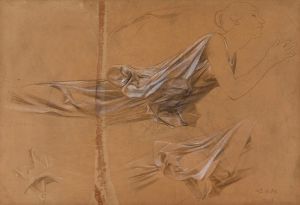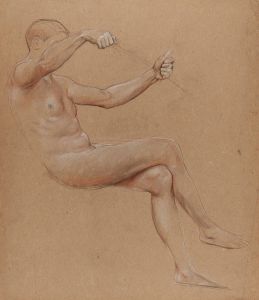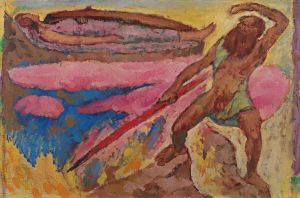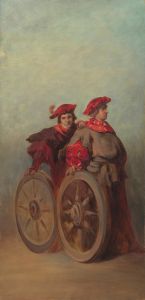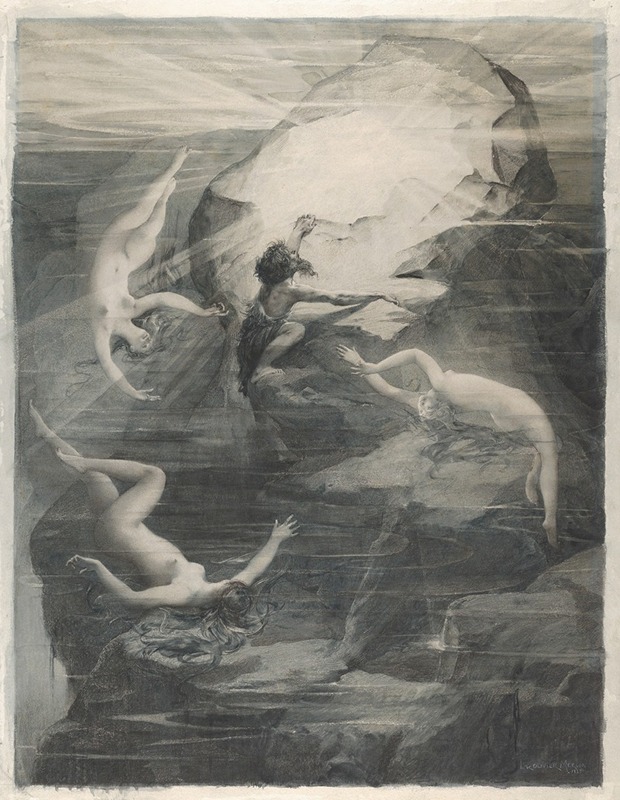
Alberich and the Rhinemaidens
A hand-painted replica of Luc-Olivier Merson’s masterpiece Alberich and the Rhinemaidens, meticulously crafted by professional artists to capture the true essence of the original. Each piece is created with museum-quality canvas and rare mineral pigments, carefully painted by experienced artists with delicate brushstrokes and rich, layered colors to perfectly recreate the texture of the original artwork. Unlike machine-printed reproductions, this hand-painted version brings the painting to life, infused with the artist’s emotions and skill in every stroke. Whether for personal collection or home decoration, it instantly elevates the artistic atmosphere of any space.
"Alberich and the Rhinemaidens" is a painting by the French artist Luc-Olivier Merson, created in the late 19th century. Merson, born in 1846 and deceased in 1920, was a prominent figure in the French art scene, known for his academic style and his contributions to various artistic fields, including painting, illustration, and design. He was a recipient of the prestigious Prix de Rome, which allowed him to study in Italy and further refine his artistic skills.
The painting "Alberich and the Rhinemaidens" draws its subject from Richard Wagner's famous opera cycle "Der Ring des Nibelungen" (The Ring of the Nibelung), specifically from the first opera, "Das Rheingold." In Wagner's narrative, Alberich is a dwarf who encounters the Rhinemaidens, guardians of the Rhine gold, in the depths of the river. The Rhinemaidens are mythical creatures, often depicted as beautiful and enchanting, who play a crucial role in the opera's storyline. Alberich's theft of the Rhine gold sets off a chain of events that drive the entire cycle of operas.
Merson's painting captures this pivotal moment with a focus on the interaction between Alberich and the Rhinemaidens. The artwork is characterized by Merson's attention to detail and his ability to convey the mythological and dramatic elements of the scene. The composition likely emphasizes the contrast between the dark, cunning figure of Alberich and the ethereal, luminous presence of the Rhinemaidens, reflecting the tension and allure present in Wagner's work.
Luc-Olivier Merson was known for his ability to blend realism with fantastical elements, a skill that is evident in "Alberich and the Rhinemaidens." His work often featured historical or mythological themes, rendered with a meticulous approach to detail and a strong sense of narrative. Merson's academic background and his experience in various artistic disciplines, including his work as a designer of banknotes and postage stamps, informed his precise and illustrative style.
The painting is an example of how 19th-century artists engaged with contemporary cultural phenomena, such as Wagner's operas, which were immensely popular and influential during that time. Merson's interpretation of the scene would have resonated with audiences familiar with Wagner's music and the broader Romantic fascination with mythology and legend.
While specific details about the painting's current location or its exhibition history are not readily available, Merson's work, in general, is held in various collections and has been exhibited in numerous galleries and museums. His contributions to art extend beyond painting, as he was also involved in decorative arts and illustration, making him a versatile and respected figure in the art world of his time.
Overall, "Alberich and the Rhinemaidens" exemplifies Luc-Olivier Merson's skill in capturing the essence of mythological narratives through his art, reflecting both the cultural context of the 19th century and the timeless appeal of Wagner's operatic themes.






